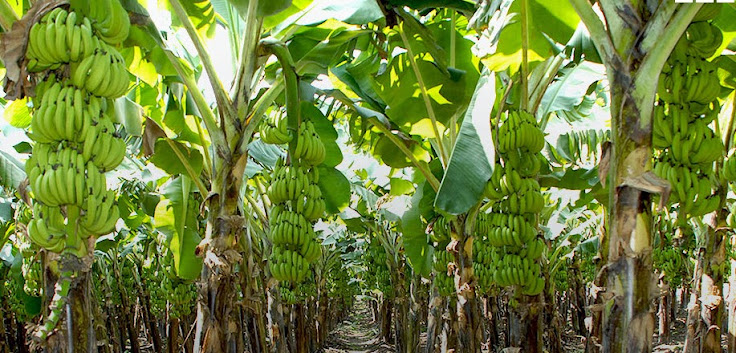WELCOME TO TISSUE CULTURE BANANA CULTIVATION!
A profitable venture with a gratifying experience !

A Plant Inoculation Room (PIR) in a Tissue Culture Lab:
Trained technicians working in LAF cabinets at Plant Inoculation Room. All TC Labs should have demarcated clean area for Plant Inoculation Rooms (PIR) having stringent sterility conditions (Class 100-10,000 air quality)

A plant growth room in a Tissue Culture Lab:
All TC Labs should have demarcated clean area for both Plant Inoculation Rooms (PIR) and Plant Growth Rooms (PGR) having stringent sterility conditions (Class 100-10,000 air quality)

A plant growth room in a Tissue Culture Lab:
All TC Labs should have demarcated clean area for both Plant Inoculation Rooms (PIR)and Plant Growth Rooms (PGR)having stringent sterility conditions (Class 100-10,000 air quality)
.jpg)
Grading of plants :
Ex-agar Banana plants under 'Grading process' in a Tissue Culture Lab.

T.C Plant in JIFFY POT :
Tissue culture Grande Naine raised in Jiffy bag / pot.

T.C Plants in JIFFY POTS :
Tissue culture Grande Naine plants raised in Jiffy pots in their holding tray.

A secondary hardening centre:
Many Polyhouses of this kind with a capacity to accomodate 1 Lakh plants each are required depending upon the production capacity of the unit.

A secondary hardening centre:
Well stocked with robust plants.

Uniform Growth!
No variations or off-types. Growth at the age of 75 Days.

A robust flower at emergence!
A healthy inflorescence in a Tissue culture Grande naine Banana tree.

Field with excellent yield!
A Tissue culture Grande naine Banana bunches under development. Farmer:Murugan,Gudalur, Theni Dt, Tamilnadu.

Robust and Uniform Bunches !
A charcteristic feature Tissue culture Banana plants are the uniformity of bunches in all the trees in a given field.

Bountiful Harvest and feels hard to part with his most loved produce!
Here, a farm labourer refused to move out of the frame. At the field of Farmer: S.T.Palanisamy, Cumbum, Theni Dt, Tamilnadu.

B A N A N A! - No doubt ! - A profitable venture ! !
Bunches with an average of weight of more than 45 Kg.







.jpg)











 21:21
21:21
 Tissue Culture Banana Cultivation Technology
Tissue Culture Banana Cultivation Technology








 Posted in:
Posted in: 





